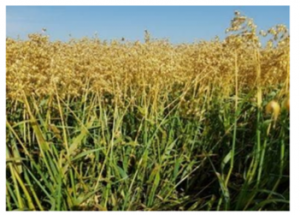An EIP-AGRI operational group on improving the soil’s quality and structure, using new generation microelements and microorganisms.

The decreasing soil quality is a significant problem for farmers and is mainly due to the extensive use of fertilisers and intensive farming. The surplus of nitrogen fertilisers leaking into the water bodies is damaging the environment. In addition, the large volumes of fertilisers needed, which are getting more and more expensive, increase production costs and decrease the farms’ profitability. Even organic farmers face the problem of low fertility. While they only use organic fertilisers, these do not improve the quality of the soil.
This EIP-AGRI operational group brought together scientists, a consulting institution and farmers to carry out experimental tests on improving the soil’s quality, by reducing the use of nitrogen fertilisers and increasing the production’s yield and quality. The experimentation focused on the use of new generation microelements and on improving (restoring) soil structure with the help of microorganisms.
The project results showed that when the volume of nitrogen fertilisers was reduced by 50% in conventional farms growing grain cultures (summer and winter wheat, peas, beans, oats, barley) and the products NaturGel and Probio Humus were applied, fertility increased and the profit of these farms increased from EUR 9 /ha to EUR180 /ha.
The tests also showed that treated plants survived droughts better. They were healthier and germinated and ripened at the same time. Although the general fertility was low because of poor weather conditions (rain showers, droughts), in the experimental fields it was still higher by 3-45%.
Soil tests showed that most of the mineral nitrogen applied was absorbed by the soil in the experimental fields. The amount of humus and organic carbon is increasing in the soil of the experimental fields and the humification process was stimulated.